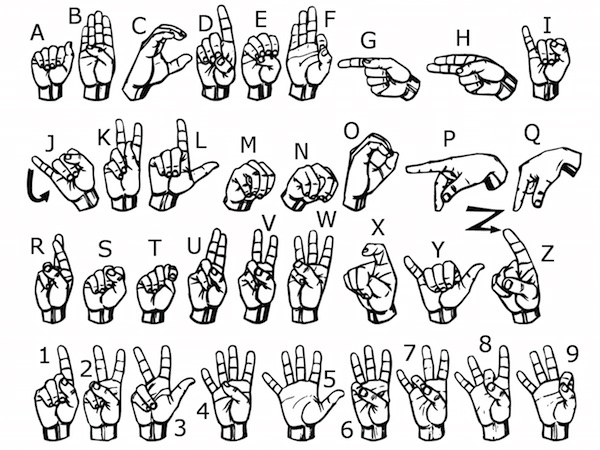Administration Recommends Changes to World Language Instruction in Scarsdale Schools
- Category: Schools
- Published: Thursday, 01 December 2016 14:06
- Heather Gilchriest Meili
 The results of a much anticipated study of the world language program at all grade levels in the district were presented at the School Board Meeting on Monday November 28th, as Assistant Superintendent for Curriculum, Assessment and Instruction Lynne Shain presented the findings of the reconvened World Language Committee. The School Board members themselves probed deeply into the Committee's findings, revealing an interesting array of viewpoints among their group. Will community members be pleased with the current recommendations? Some certainly will not, but is there a quieter constituency that will be content to accept or even applaud them? Comments from respondents to the World Language Survey results suggest that possibility.
The results of a much anticipated study of the world language program at all grade levels in the district were presented at the School Board Meeting on Monday November 28th, as Assistant Superintendent for Curriculum, Assessment and Instruction Lynne Shain presented the findings of the reconvened World Language Committee. The School Board members themselves probed deeply into the Committee's findings, revealing an interesting array of viewpoints among their group. Will community members be pleased with the current recommendations? Some certainly will not, but is there a quieter constituency that will be content to accept or even applaud them? Comments from respondents to the World Language Survey results suggest that possibility.
The recommendations, in brief, are:
- Maintain current World Language offerings
- Increase frequency of elementary Spanish to 3 periods in a 6-day cycle (without increasing the total minutes of instruction)
- Consider offering additional language instruction before or after school sponsored either by the District or the PTA, along the lines of the "Princeton Model"
Maintain Current World Language Offerings
In concluding that the District should simply maintain current World Language offerings, Ms. Shain cited many considerations. Analyzing the surveys sent out last October to Scarsdale parents in different groupings (K-12, 6-11, and rising 6th grade) it was determined that when responding parents were asked about the priority they would give to committing additional finances to expand the World Language program on a sliding scale of 1-100, they were evenly distributed: 48% put it as a less than 50 out of 100, 51% as greater than 50 out of 100. When asked to rank languages they would like to see added to the World Language program in elementary, Mandarin led by a hair with French and "None" nearly tied. The same question applied to middle school produced the ranking Mandarin, None, and Latin, while at the high school level "None" was most favored, followed by the surprising 2nd and 3rd spots of German and American Sign Language (ASL). Students from grades 6-11 similarly queried preferred ASL followed by Italian and German (pages 21-32 in the Report Appendix.)
 It should be noted here that during the Public Comment period, Mayra Kirkendall-Rogriguez of the Scarsdale Forum Education Committee took sharp exception to this analysis of survey responses, stating: "The scoring methodology is VERY odd. You used a ranking methodology for respondents to vote and then chose not to use a Rank Choice Voting approach to evaluate the results....For example, in the student survey, Mandarin had the most first choices. Mandarin is second only to ASL when you consider second choices, third choices and fourth choices....Among parents the strength of Mandarin preference is even more profound."
It should be noted here that during the Public Comment period, Mayra Kirkendall-Rogriguez of the Scarsdale Forum Education Committee took sharp exception to this analysis of survey responses, stating: "The scoring methodology is VERY odd. You used a ranking methodology for respondents to vote and then chose not to use a Rank Choice Voting approach to evaluate the results....For example, in the student survey, Mandarin had the most first choices. Mandarin is second only to ASL when you consider second choices, third choices and fourth choices....Among parents the strength of Mandarin preference is even more profound."
Another consideration mentioned by Ms. Shain was the fact that as the Committee surveyed school districts in the Tri-State area that have Mandarin programs, they found that middle school Mandarin enrollment numbers do not necessarily carry over into high school. They lose students during that transition, meaning that the extra years of Mandarin instruction do not necessarily make the difference in student commitment and achievement that would be desired.
Related to that finding, Board member William Natbony picked up on a detail within the report, saying, "One of the things that really struck me....the number of hours in the classroom anticipated in order to reach a proficient standard....575-600 hours for languages such a Spanish/French....and the 2200 hours that seem to be standard for general proficiency in a language like Mandarin. When you're talking about classroom time, teacher time, budgetary constraints....that difference is really significant."
Ms. Shain elaborated: "You're right....We calculated how many hours of instruction. For French or Spanish if you combine four years of high school with three years in middle school you can get there. But for Mandarin you can't get there from here. We still offer it at high school as many students surprise us and get to AT or advanced level within the four years; it's very personal and individual."
Increase Frequency of Elementary Spanish
 In proposing a change to elementary Spanish instruction, Ms. Shain stated, "Looking at elementary we concluded the frequency wasn't there." The proposal is that students would continue to receive 80 minutes of instruction in each 6-day cycle. However, rather than two 40-minute classes per cycle, students would attend one 40-minute class focused on cultural and other components, and two other 20-minute classes which would focus entirely on producing the target language.
In proposing a change to elementary Spanish instruction, Ms. Shain stated, "Looking at elementary we concluded the frequency wasn't there." The proposal is that students would continue to receive 80 minutes of instruction in each 6-day cycle. However, rather than two 40-minute classes per cycle, students would attend one 40-minute class focused on cultural and other components, and two other 20-minute classes which would focus entirely on producing the target language.
Board Vice President William Natbony asked for specifics: "You're still dealing with elementary kids, getting settled, getting in and out, you lose time....Is there anything out there that says this change will make a difference?"
Ms. Shain confirmed, "The research that's out there is about frequency....The way we've discussed it with the FLES teachers and principals, we'll preserve the full 20 minutes.....That's one of the things that seems to hold our kids back is they don't have enough opportunities to use the target language....The best that the committee could come up with given all the issues in an elementary day was increase the frequency; we couldn't find a way to increase the minutes."
The "Princeton Model"
As the World Language Committee went about their task of examining other districts' language offerings, one topic which received extra study and consideration was the Princeton, NJ Middle School Mandarin model. In the Princeton Middle School, Mandarin is offered before the regular start of the school day, during a so-called "0" period. Students who take advantage of this offering also study either French or Spanish during the regular school day. If offered by our district, a NYS certified teacher would be required. Could one be found to teach that schedule? Another possibility would be to offer it under PTA sponsorship, making teacher hiring more flexible. Parents would be responsible for transportation, and the early class would meet four days a week to allow one morning to be available for music.
Board Member Chris Morin pushed back as this option was discussed: "It's hard enough to teach Spanish over ten years, and there's not enough demand for Mandarin as a part of the core school day. Now we're talking about adding a course at 7:30 am to teach - more children? - less children? - a language that takes as much as four times as long to learn...?"
Superintendent Dr. Thomas Hagerman replied, "Lynne is trying to be flexible and accommodating, that we have an option in place for those interested. Not necessarily Mandarin; ASL, Italian, German. ASL is very practical and takes much less than 2,200 hours."
Ms. Shain herself did raise a concern about this potential program and its early morning time, "Knowing how tightly scheduled our students are, we're also looking at wellness. How much should students schedule? It's a family decision."
In assessing Ms. Shain's report, and looking ahead, the mood among the Board and Administration seemed cautious. Dr. Hagerman called for more from the Committee: "Let's get more information about what improvement is needed...what are the issues? The FLES program time, instructional pedagogy, personnel? The World Language Committee has more work to do." Board Member Arthur Rublin seemed to favor caution: "There's a lot of merit to focusing on the core program as it exists now and shoring it up before we go to ASL or Italian or Mandarin."
Community Views
Within the World Language Report (available in full through the Board of Education webpage) there are appendices which include every comment sent in response to the October survey. The comments are anonymous and they make fascinating reading.
Some align with the view of the Scarsdale Forum Education Committee with a fervent desire for Mandarin, "key language of the future." Yet if one were to judge only from the comments submitted, a not-insignificant group considers Mandarin "not a priority" or even questions whether "Mandarin can be acquired in this way?"
Some suggest the option of ASL for students with learning differences or speech issues who may not readily acquire other new languages. There are those who favor Latin while some pronounce it "dead." Humanities lovers remind us that German and Italian remain important in history and music.
A significant number echo Mr. Rublin's reminder of the value of focusing on the core program, particularly in elementary grades: "Use the time elsewhere...the teachers would be ecstatic." "The teachers already struggle with finding enough classroom time to teach the basics."
The most expressive respondents by far are those who are furious about elementary Spanish in its current form. From one native Spanish speaker, "The worksheets have spelling and grammar mistakes." "Language prep in elementary is pitiful." "I would rather have my child sit in the library with a book during that hour." "It is really bad, and even the children make fun of it."
The most prescient among us may be those who redefine World Language as "Java, C, C+, C++, C#, Javascript, Python." "Computer languages are now more important....Let's teach our kids how to create that technology and not just consume that technology."







